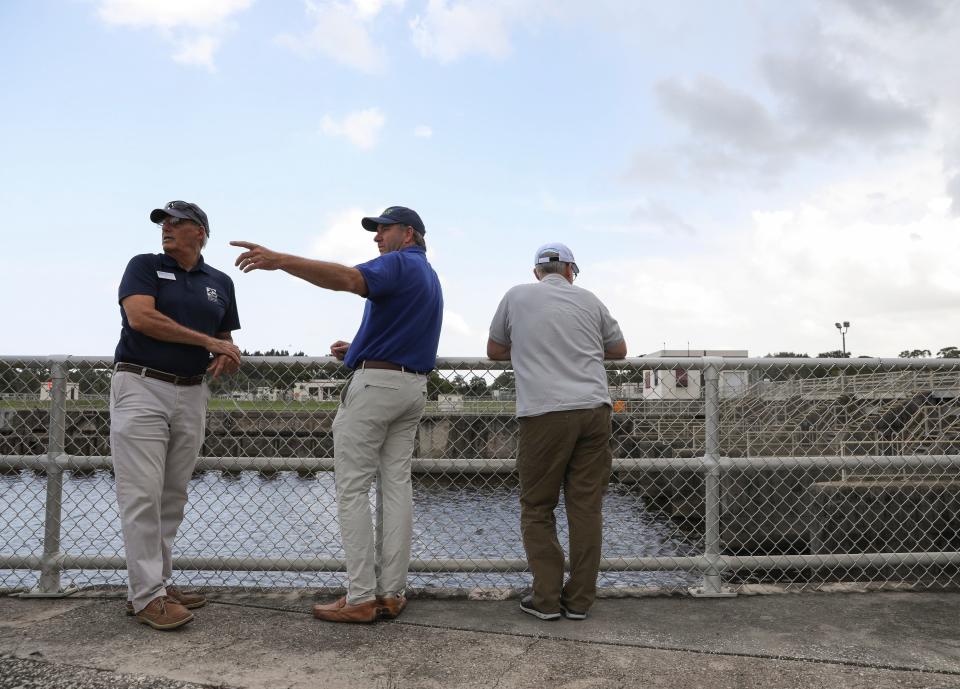Discharges leaked at St. Lucie Lock and Dam for second time in two weeks
On Friday morning, 22.8 million gallons of water was discharged into the St. Lucie River estuary from the C-44 canal, the Army Corps of Engineers said Friday on its weekly call with the media. The discharge only occurred for an hour, said Maj. Corey Bell, incoming deputy commander of the Jacksonville district of the Corps.
This comes 13 days after 142.7 million gallons of water was discharged into the river Aug. 5, according to the Corps' Lake Okeechobee data website. The water was not believed to contain any of the toxic cyanobacteria, microcystis aeruginosa, which has been as far east as Timer Powers Park in Indiantown, about halfway down the canal to Stuart.
Corps records show that 180.5 million gallons of Lake O water has been moved from the lake through the Port Mayaca flood gates into the C-44 canal since Aug. 4. Water supply for agriculture was the reason water was moved from the lake into the canal, according to Lt. Col. Todd Polk in a media call Aug. 11.

The problem comes from the level the Army Corps is trying to manage the 23-mile long C-44 canal. When the level of the canal gets above 14 feet 6 inches, the Army Corps will open the St. Lucie Lock & Dam and discharge excess water to the St. Lucie River in Stuart. Heavy local rainfall Aug. 16-17 on the lands that drain into the C-44 caused the canal to get too high.
The C-44 basin received 3.1 inches of rainfall the week of Aug. 11-18, according to data from the South Florida Water Management District. That triggered the Corps' decision to discharge water into the St. Lucie River.
"When the C-44 canal gets above 14.5 feet it impacts navigation for boats trying to get under bridges, docks begin to submerge at marinas and it causes erosion along the banks of the canal," Polk said.
But adding water to the canal from the lake, and then getting caught by afternoon rainstorms, causes the canal to rise too high, he said. The water users along the canal need to shed water when the rains come, instead of pump water out of the canal for irrigation. The Corps' only outlet for that water is the St. Lucie Lock and Dam.
No water is being moved into the Caulkins Water Farm which has been at capacity since June. The SFWMD is currently running two pumps at the $330 million C-44 Reservoir with a combined inflow capacity of just over 4,100 gallons per second, according to a spokesman with the SFWMD.
The Corps continues to operate its Lake Okeechobee management according to its wet season strategy, Bell said. The lake's level on Aug. 18 was 15 feet 4 inches, nearly 2 feet 7 inches higher than a year ago. It is continuing to monitor tropical storm activity in the Atlantic basin.
Algae is still widespread on the surface of Lake O, but has shrunk in size in recent satellite imagery by NOAA.
Ed Killer covers the outdoors for TCPalm. Email him at ed.killer@tcpalm.com.
This article originally appeared on Treasure Coast Newspapers: Army Corps dumps canal water into St. Lucie River; Algae moving east

